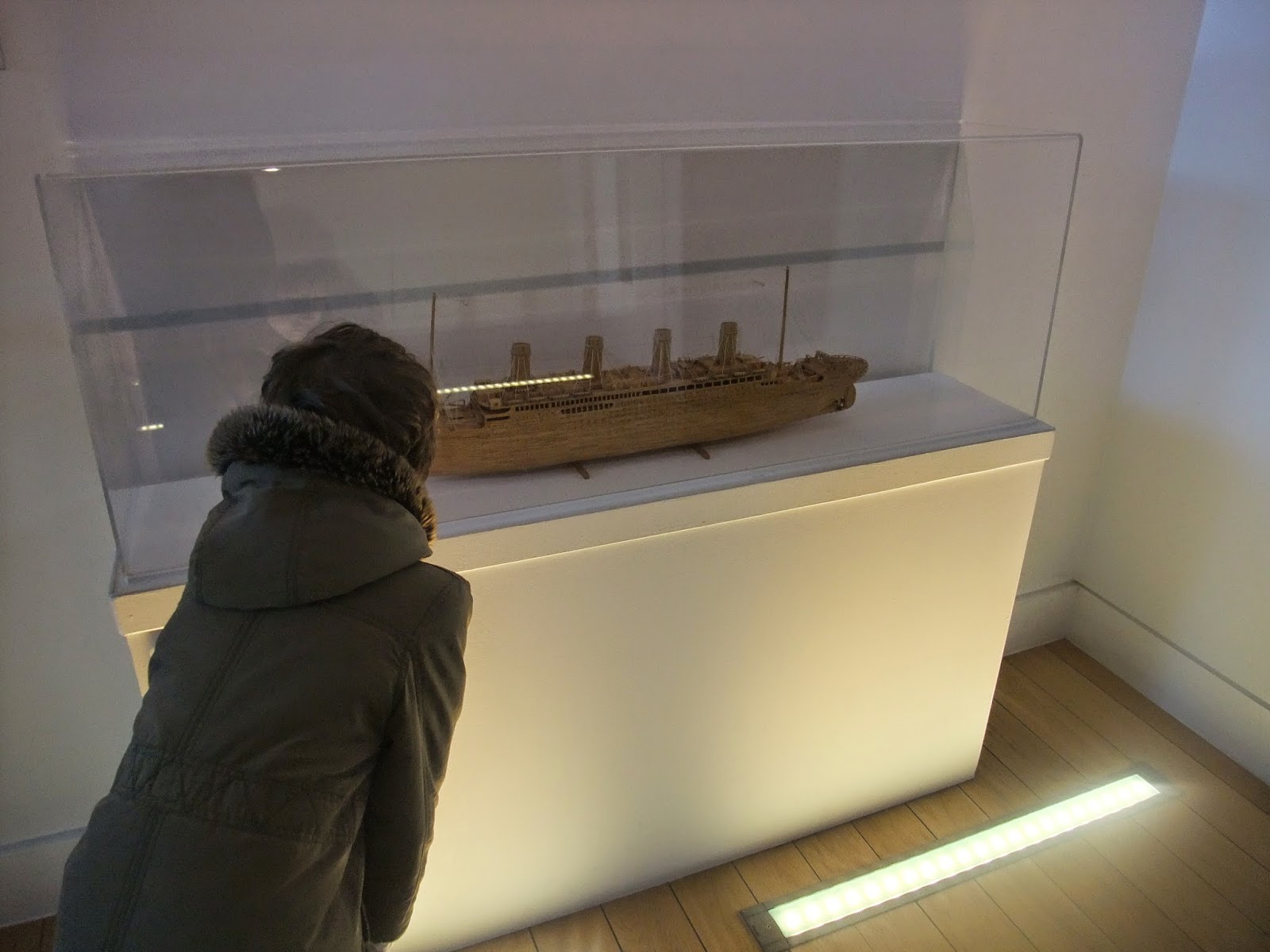 |
| RMS Titanic leaves Southampton on 10 April 1912 |
Coming from a humanities background, it was a challenge for me to get to grips with this myself, let alone explain it to Charlie. Frankly, I struggle with words like 'density', 'volume' and 'mass'. Fortunately, I had two things on my side: motivation - and the internet.
In my background reading, I learned that one of the reasons the Titanic was able to float, in spite of being made of heavy metal, is that most of her volume ('the amount of three-dimensional space an object occupies' - see here) was occupied by air, which means the average density of the ship was less than the density of the water. Density is a measure of how solid something is (great, simple explanation here). When the Titanic hit the iceberg, the ship started to fill with water, which displaced the air. Once the average density of the water and the steel ship was greater than the density of the water, she sank (see longer explanation here).
There's another good explanation for adults and older children here.
I told Charlie about Archimedes, the Ancient Greek who discovered the science of buoyancy. We watched a video called: ' How Taking a Bath Led to Archimedes' Principle', which provided a brief and child-friendly description of the famous (although not necessarily accurate) 'Eureka' story.
Charlie thought this was funny, but was understandably still puzzled about how this helped a ship to float. I had found several descriptions of Archimedes' principle - such as this one here - but they were too complex.
So we watched some more videos.
And more...
We also watched this BBC clip which demonstrated that water is a force which moves on its own and can push and pull.
Then we collected some objects to perform a scientific experiment to see which would float and which would sink.
Before putting the objects in a tubful of water, I asked Charlie to predict what he thought would happen. I wrote this on a worksheet. He then proceeded to place each item in the water. Some of his predictions were correct; some weren't. We discussed why and noted down the results.
Now it was time to have a go at making a boat of our own. For this, I referred to a fabulous online guide called 'Titanic Science'. One of the activities explores buoyancy, using modelling clay. The activity sheet explains that:
'Liquids exert an upward force on an immersed or floating object. This upward force is called buoyancy. The larger the surface area of the object, the greater the area for the water to push back on. Ships such as Titanic are made out of steel. Put a lump of steel into the water and it will sink. Spread the same lump out into a boat shape with thin walls and it can float.'
So, the density of the clay used doesn't change, but the
volume of the object made from the clay increases. This increase in
volume decreases the overall density of the object, making it float.
Charlie modelled a boat out of clay.
Then he rolled up a ball of clay.
He dropped both of these onto a tub of water: the ball of clay sank to the bottom; the boat floated. Success!
Charlie had some fun playing with the clay after this, whilst I made myself a cup of tea. We then curled up on the bed together whilst I read him two children's picture books which take a light, comical look at the science of buoyancy.
'Mr Archimedes' Bath' is (very) loosely based on the story of how Archimedes discovered the principle of buoyancy. When the bathwater keeps overflowing, he is determined to find out which of the animals who is sharing his bath is responsible.
In 'Who Sank the Boat', a cow, a pig, a donkey, a sheep and a tiny mouse go for a row in a boat. One of them sinks the boat. But which one could it be?
Charlie enjoyed both these books and it was good to have a lighter perspective on the science we'd been studying today.





























































